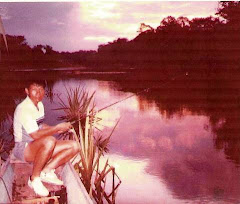SARAWAK RANGERS.
Formed by Charles Brooke in 1862, who later was to become the second Rajah of Sarawak. Mooted by Charles Brooke that to kill Dayaks he must use the Dayaks themselves. It became the nucleus of every military expeditions he mounted against the rebellious and warring Dayaks.
Formed by Charles Brooke in 1862, who later was to become the second Rajah of Sarawak. Mooted by Charles Brooke that to kill Dayaks he must use the Dayaks themselves. It became the nucleus of every military expeditions he mounted against the rebellious and warring Dayaks.
However, due to the financial constraint he faced during the 1930 Great Economic Recession, Sarawak Rangers was disbanded on 29 February 1932. Some of the personnel were absorbed into the Sarawak Constabulary.
From hereon, there was not much records about the activity of Sarawak Rangers.
It was said that in December 1941, Sarawak Rangers was re-raised to help in the defense of Kuching and Miri. As we knew, the might of the Japanese Army was too overwhelming. The defence of Kuching and Miri collapsed and members of Sarawak Rangers retreated into their long houses. These personnel, however, did help the Australian forces in harassing the Japanese during their occupation of Sarawak.
Sarawak was liberated on 11 September 1945 and again members of the Sarawak Rangers went back into their long houses.
On 16 June 1948, Malaya declared the Emergency. Seven weeks later, on 8 August 1948, a group of 49 Iban Trackers were sent to Malaya to help the Commonwealth Forces in fighting the insurgents. The para-military Iban Trackers proved to be very successful and on 1 January 1953, it was reformed into two platoons of Sarawak Rangers (Malayan Unit). By then, some 1200 Ibans had served and seen actions in Malaya. General Templar had called them the best trackers in the world.
The British Army was so impressed that it decided to take in Sarawak Rangers (Malayan Unit) as part of the British Army on 1 April 1960 and renamed it as Sarawak Rangers (Far East Land Forces). However, on 15 September 1963, it was disbanded and on the day Malaysia was born on 16 September 1963, some 100 of the former members of Sarawak Rangers volunteered to join the new First Battalion The Malaysian Rangers. The rest went home to their long houses, for reasons known to themselves.
For twelve years of fighting, the Iban Trackers and Sarawak Rangers suffered amazingly low casualties, bearing in mind that they were always infront of any patrols. They suffered 20 KIA and 25 WIA. Their achievements spoke of their prowess in battles - 1 George Cross (civilian equivalent of the Victoria Cross), 1 George Medal (equivalent to our PGB), 1 Military Medal, 1 BEM, 19 Mention-In-Despatch and 21 Commander-In-Chief Certificates. If only the Iban Trackers had been fully recognised as a full-fledged military unit, it could have been eligible for more awards that were offered to military units.
It was not the end for Sarawak Rangers. Some joined the Police Force to continue their service to the country. During the Confrontation with indonesia they were formed into Border Scouts to provide the much-needed service to the Armed Forces.
Malaysia would have all to gain if this elite Unit was retained as one entity. Perhaps, it is not too late to have a rethink on this matter. Let's discard suspicions, political antagonism and jealousy if we want to move forward and have the best of the best for the nation.
Note: The picture below: On the top was the 1st platoon of Sarawak Rangers and on the bottom was the 2nd platoon, when they were reformed on 1 January 1953.







No comments:
Post a Comment